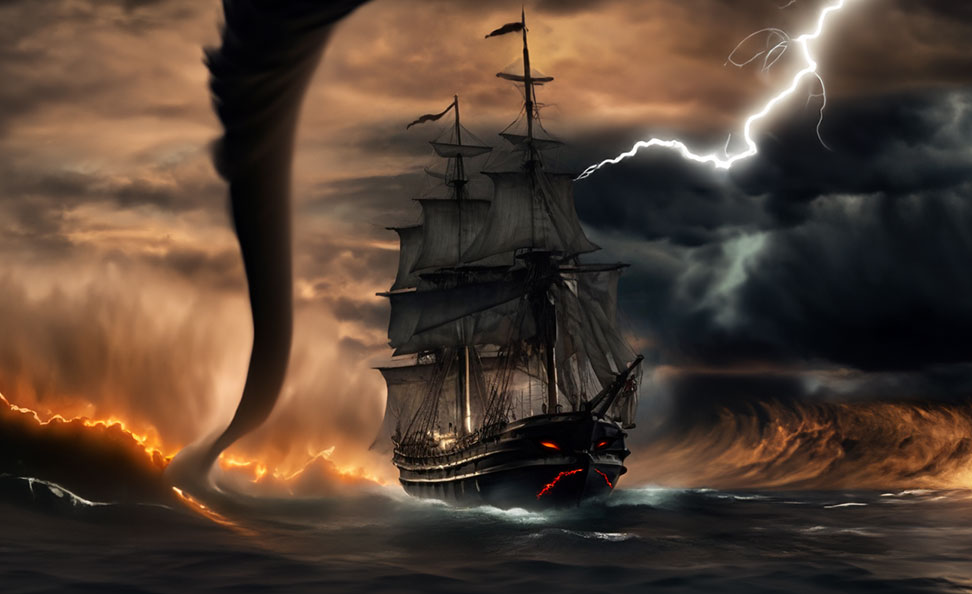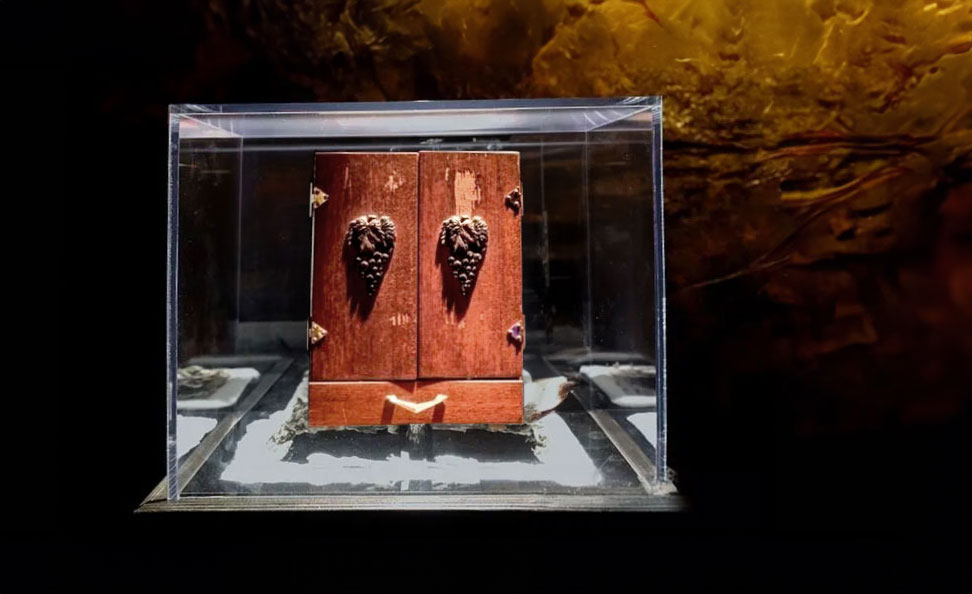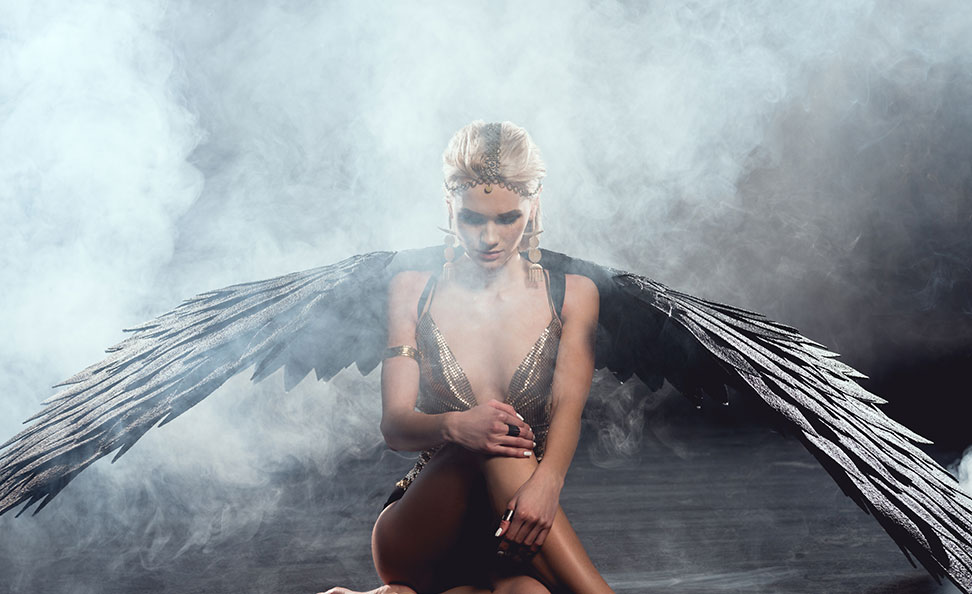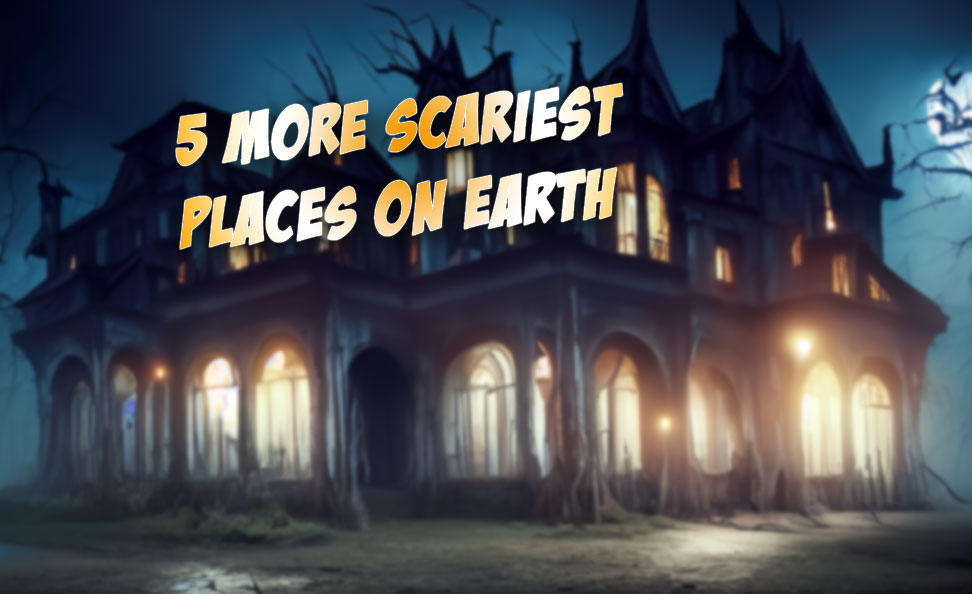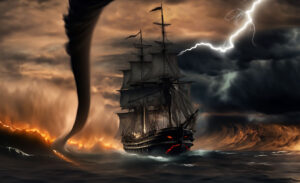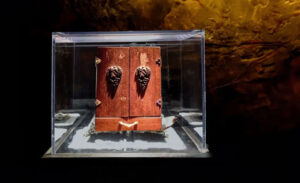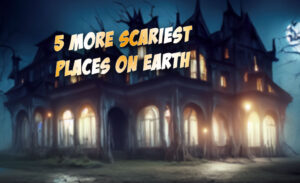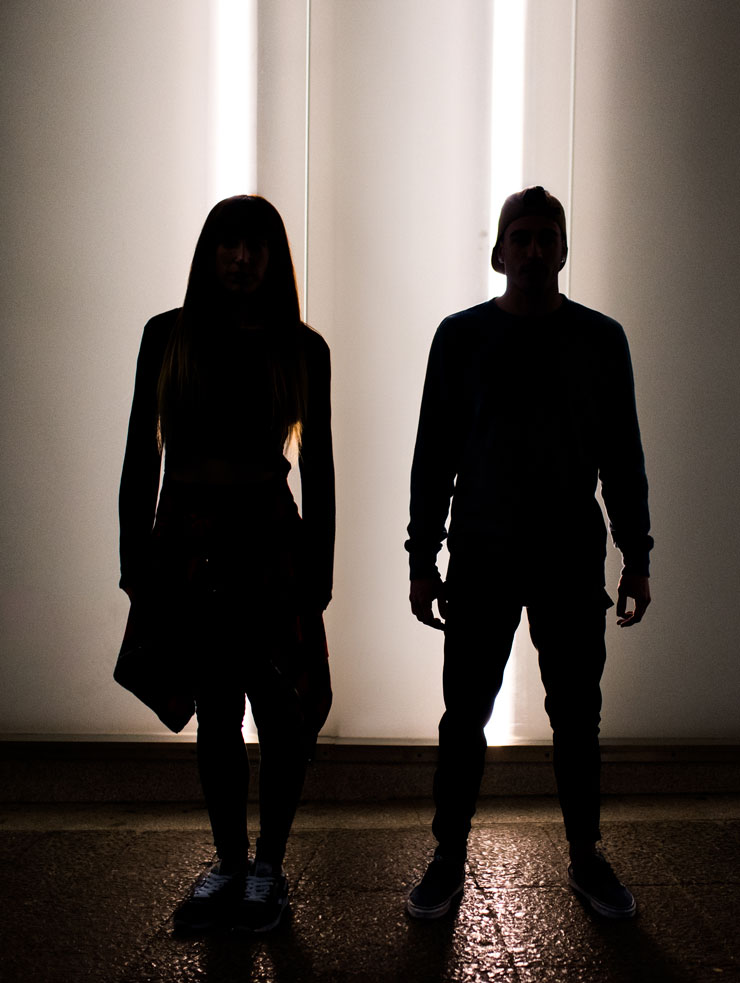Ghosts have captivated the human imagination for millennia. From folk tales around campfires to modern-day horror films and television series, these supernatural entities, or types of ghosts have continued to fascinate and terrify us.
The definition of a ghost varies, but, in general, it is an apparition of a deceased person or an otherworldly being that is believed to haunt the living. Ghost encounters and experiences range from harmless to truly spine-chilling, and different cultures have their unique takes on these eerie visitors.
Five Types of Ghosts
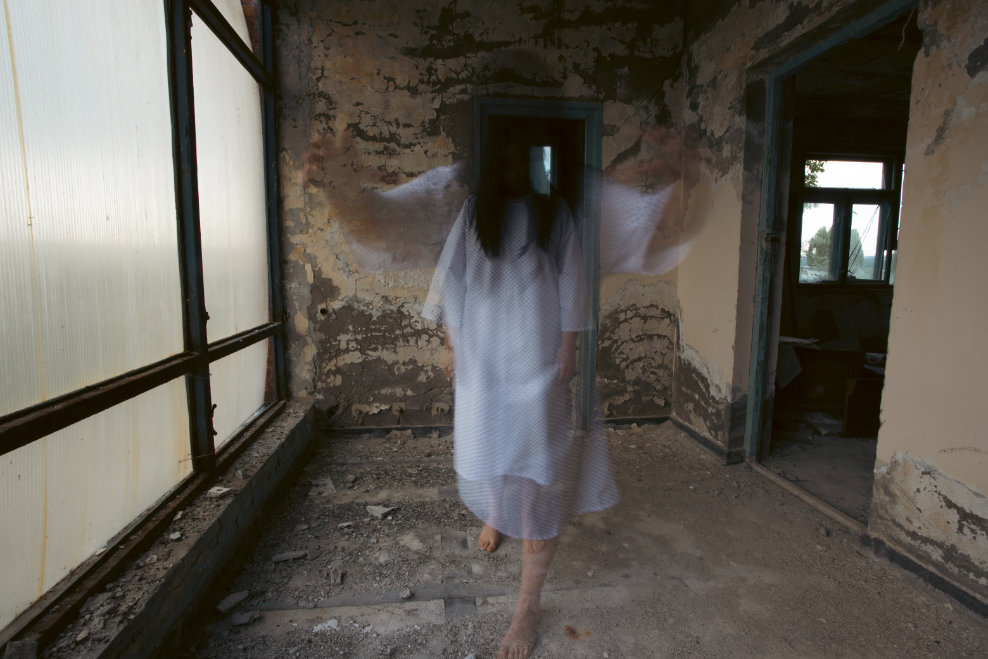
Poltergeists
Description and History
The term “poltergeist” comes from the German words “poltern,” meaning “to make a noise,” and “geist,” meaning “spirit” or “ghost.”
Poltergeists are known for their ability to move or throw objects, create loud noises, and cause general chaos in a location.
These types of ghosts are often associated with a specific person, usually an adolescent or individual experiencing high levels of stress or emotional turmoil.
Poltergeist activity has been recorded throughout history, with accounts dating back to ancient Greece and Rome.
Examples from Popular Culture
Poltergeists have made their way into pop culture through various media. The 1982 horror film “Poltergeist,” directed by Tobe Hooper and produced by Steven Spielberg, brought this type of ghost to the forefront of mainstream media. The movie followed a family terrorized by a menacing poltergeist that eventually kidnaps their youngest daughter.
Another popular representation of poltergeists is the character Peeves from the Harry Potter series. Peeves is an annoying, mischievous poltergeist who inhabits Hogwarts School of Witchcraft and Wizardry, constantly causing trouble for the students and professors.
Residual Hauntings
Description and History
Residual hauntings refer to a ghostly presence that repeats a specific event or scene from the past. This type of ghost is usually unaware of its surroundings and the living people who are witnessing its actions.
Residual hauntings are believed to be fragments of a past event imprinted in the environment, typically associated with places where traumatic or emotionally charged events occurred.
Examples from Popular Culture
Perhaps one of the most famous examples of a residual haunting is the story of the Flying Dutchman.
This legendary ghost ship is said to be doomed to sail the high seas forever, never able to make port. Sightings of the phantom vessel continue to be reported today and are often associated with bad luck or impending disaster.
Another example of residual haunting in popular culture is Stanley Kubrick’s 1980 film adaptation of Stephen King’s horror novel, “The Shining.” The Overlook Hotel, where the main character Jack Torrance works as a caretaker, is plagued by residual hauntings.
Guests and employees have witnessed ghostly ballroom parties, blood-soaked elevators, and the repeated apparition of the grisly Grady twins, among other paranormal phenomena.
Intelligent Hauntings
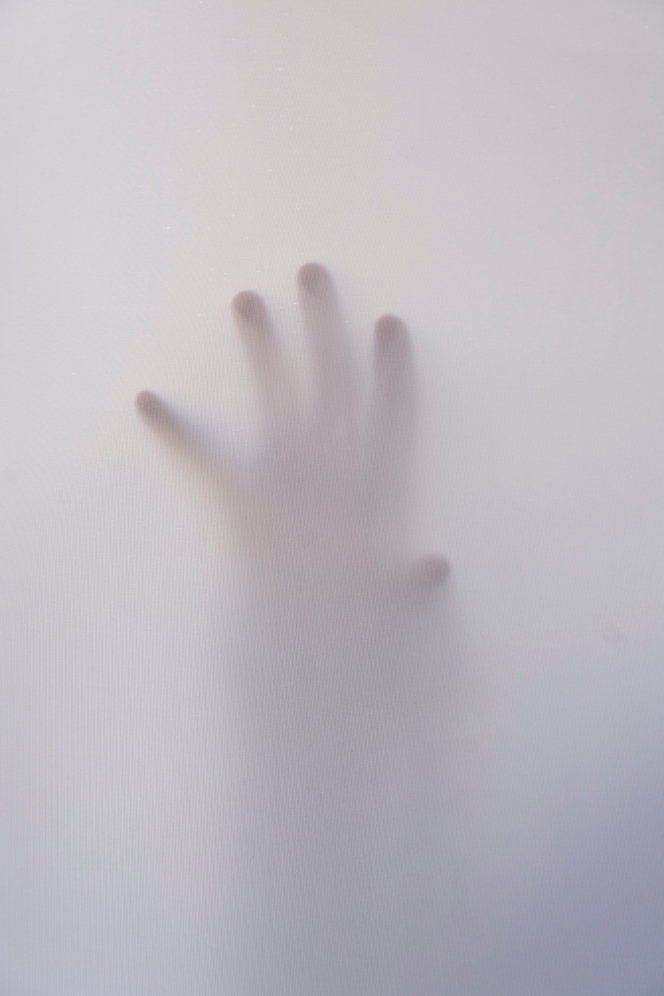
Description and History
Intelligent hauntings involve ghosts that appear to be conscious of their surroundings and can interact with the living. These types of ghosts are usually seeking to communicate or help resolve unresolved issues.
They are often described as “earthbound” souls who have difficulty moving on to the afterlife. Many people who encounter an intelligent haunting report feeling a strong connection or empathy toward the spirit, with some even forming close relationships.
Examples from Popular Culture
The 1990 film “Ghost,” starring Patrick Swayze, Demi Moore, and Whoopi Goldberg, is an iconic example of an intelligent haunting. Swayze’s character, Sam Wheat, is a ghost who seeks the help of a reluctant psychic (played by Goldberg) to communicate with his grieving girlfriend (Moore) and solve his murder.
Another example of an intelligent haunting is the popular television series “Medium,” which aired from 2005 to 2011. The show’s protagonist, Allison Dubois, is a medium who uses her psychic abilities to communicate with the dead and assist law enforcement in solving crimes.
Demon or Demonic Haunting
Description and History
Demonic hauntings involve malevolent entities that are not the spirit of a deceased human but rather an evil presence seeking to cause harm, terror, or possess the living.
Demonic hauntings are considered rare but often leave lasting impacts on those who experience them. Demons may manifest as shadowy figures, inhuman voices, or oppressive, overwhelming fear.
They are often associated with religious beliefs surrounding evil spirits or fallen angels.
Examples from Popular Culture
The 1973 film “The Exorcist,” directed by William Friedkin and based on the novel by William Peter Blatty, is the quintessential example of a demonic haunting. The story follows a young girl named Regan, who becomes possessed by a demon after playing with a Ouija board. The film depicts the harrowing efforts of two priests attempting to exorcise the demon from Regan, with terrifying and tragic results.
Another example of a demonic haunting in popular culture is the “Paranormal Activity” film series. These found-footage horror films document a malevolent supernatural presence terrorizing families and ultimately leading to possession or death.
Shadow People
Description and History
Shadow people are mysterious, shadowy figures that are often only seen for a brief moment in the corner of the eye before disappearing.

These elusive entities have been reported for centuries, and descriptions often include features like large, glowing red or yellow eyes and a feeling of intense dread or discomfort. Some believe that shadow people are manifestations of negative energy or emotions, while others theorize that they could represent an entirely different type of supernatural being.
Examples from Popular Culture
One example of shadow people in popular culture is the sinister Slender Man, a modern urban legend that originated on the internet. Slender Man is described as an unnaturally tall, faceless figure dressed in black, who is known to stalk and terrorize unsuspecting victims, particularly children.
Shadow People have also been depicted in episodes of paranormal television shows such as “Ghost Adventures,” “Paranormal Witness,” and “A Haunting.” These programs often illustrate encounters in which shadowy figures create feelings of terror, unease, and occasionally physical sickness or injury.
Mystical Finale
The world of ghosts and paranormal entities is as diverse as it is mysterious. The five types of ghosts discussed here represent merely a fraction of the many variations of otherworldly visitors that have been reported and documented throughout history.
These spirits have served as inspiration for our stories, films, and the darkest corners of our imaginations. As our understanding of the supernatural realm continues to evolve, perhaps so too will our relationship with these enigmatic beings. Whether they are the remnants of human souls, manifestations of emotion, or something else entirely, one thing is for sure: ghosts continue to remain a fascinating and chilling aspect of our cultural landscape.
Many people remain skeptical of the existence of ghosts, while others are firm believers in their presence. Regardless of one’s belief, the stories surrounding these supernatural entities continue to captivate our attention and spark debate. From poltergeists wreaking havoc to intelligent spirits reaching out for communication, our fascination with these otherworldly beings seems to have no limits.
As with any aspect of the unknown, fear often accompanies our curiosity, and the stories and legends passed down through generations have a significant impact on our collective psyche.
Variations in cultural explanations for these phenomena highlight the human need to understand and categorize our experiences, no matter how otherworldly they may seem.
The prevalence of paranormal-themed entertainment only strengthens the societal interest and fascination with ghosts and the afterlife.

